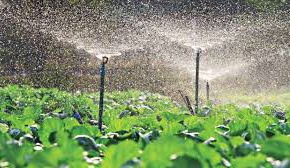Irrigation water analysis

Importance of water in plant production
- NN 120/12, 118/18, 42/20; Technological instructions for integrated production of field crops issued by the Ministry of Agriculture on the basis of the Law on Agriculture
- NN 137/12, 59/14; Rule Book on integrated production of agricultural products
Without water plants cannot exist. 98% of the absorbed water is lost by the plant through transpiration, the rest is incorporated into the plant tissue. In different parts the plant contains 30-95% water. In nature, the plant is supplied with water by absorbing water from the soil. Water in the soil comes from rain or groundwater. Rainfall is unevenly distributed throughout the year. Ensuring sufficient amounts of water for the growth and development of crops in intensive production is done by adding water to crops - irrigation.
The primary sources of water for irrigation are surface waters — rivers, water reservoirs, and artificial watercourses. The Food and Agriculture Organization (FAO) has issued an Ordinance on requirements for irrigation water in which water quality is assessed on the basis of three potential problems: salinization, reduction of infiltration capacity and toxicity, and with specific effects on different technologies.
Determining the degree of salinity of water is one of the important parameters of the suitability of irrigation water. High concentrations of ions such as sodium and chloride, and boron and trace elements, act specifically on sensitive cultures, causing "water stress".
Irrigation water quality
The content of cations and anions ("hardness") of water depends on the content of calcium and magnesium that enter the water by melting from the soil or rocks.
pH value of water (“aggressiveness”)
Total salt content - EC value (dS / m) or total dissolved salt mg / l of water
The usual value is EC = 0-3 dS/m or total dissolved salts = 0-2000 mg/l
Suitability for irrigation according to salt content
According to the salt content, water is classified into three categories:
- without limit <0.7 dS / m or <450 mg / l
- weak to moderate limit 0.7-3.0 dS / m or 450-2000 mg / l total dissolved salt
- severe limit> 3.0 dS / m or> 2000 mg / l
Irrigation water analysis parameters that we conduct:
- temperature,
- pH,
- content of suspended solids,
- total dissolved salts (TDS),
- electrical conductivity (EC),
- nitrates,
- sodium,
- chlorine,
- chlorides,
- total hardness,
- alkalinity,
- carbonate hardness,
- non-carbonate hardness,
- carbonates,
- bicarbonates,
- microelements: K, Ca, Mg, Fe, Zn, Cu, Mn, Mo, Na,
- heavy metals: As, Cd, Ni, Pb, Cr, Mo, Co, Hg
- Microbiological analysis: coliform bacteria and E. Coli